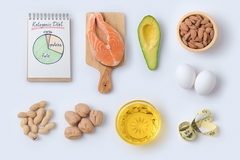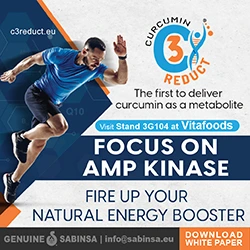FrieslandCampina Ingredients broadens portfolio with three LCPUFA ingredients for infant formula
10 Nov 2022 --- FrieslandCampina Ingredients is extending its Vana-Sana range of micro-encapsulated long-chain polyunsaturated fatty acid (LCPUFA) ingredients for infant milk formula. The new ingredients – Vana-Sana DHA algae 20L, Vana-Sana ARA 20L and Vana-Sana DHA algae 11N – include arachidonic acid (ARA) developed from fungi oil and two docosahexaenoic acids (DHA) products based on algae oil.
“Although LCPUFAs have been available for many years, they enjoy renewed interest. This is being driven partly by regulators, as governments pass legislation that stipulates DHA or ARA content in infant milk formula,” Marischa Nikkels, marketing manager, early life nutrition, FrieslandCampina Ingredients, tells NutritionInsight.
“For instance, in the EU, DHA must be added between 20 mg and 50 mg per 100 kcal of infant milk and follow-on formula. In China, if formulators wish to include ARA in products for this age group, it must be at the same level as DHA if DHA is also included."
The company notes that it now has one of the largest encapsulated LCPUFA portfolios on the market.
Cleaner labels and consumer demand
FrieslandCampina Ingredients’ broader portfolio gives more flexibility in recipe formulations and the ability to diversify product offerings more, Nikkels explains.

Due to the elimination of silicon dioxide (a flow agent) and dipotassium phosphate (a buffering agent) from their production, the company says these products have cleaner labels.
Additionally, because of their advanced micro-encapsulation process, they guarantee good sensory characteristics and do not contain any fish-derived oils.
For infant milk formula producers, advantages include simpler handling and storage, increased stability and longer shelf life – even at room temperature.
 DHA and ARA may support a baby’s brain development, immune function and eye health. “The improved sensory profile of encapsulated LCPUFAs ensures better end-product characteristics and means that their health benefits find their way into more products and applications,” Nikkels adds.
DHA and ARA may support a baby’s brain development, immune function and eye health. “The improved sensory profile of encapsulated LCPUFAs ensures better end-product characteristics and means that their health benefits find their way into more products and applications,” Nikkels adds.
She explains that consumers are responsible for most of the increase in LCPUFAs.
“They are more aware of health in early life and what they can do to protect their children. They actively seek information about health issues and nutrition, as well as the benefits of specific ingredients like DHA and ARA.”
“With research continuing to reveal more advantages of LCPUFA consumption, demand is growing globally for these powerful ingredients,” adds Nikkels.
Higher LCPUFA concentrations for infants’ health
Although DHA and ARA are both found in breast milk, newborns’ ability to synthesize them is limited. Therefore, dietary consumption is essential, the company says.
Nikkels explains the higher oil load of the encapsulated products helps formulators to reduce the volume of the ingredients in the formula while retaining similar dosages for the infant.
“With well-researched influence on brain health, immune function, eye health and potentially even sleep, this is a convincing proposition,” she adds. ”The demand for LCPUFAs in early life nutrition products is apparent, with parents and healthcare professionals they trust aware of their value in infant health.”
DHA may improve brain development and could help babies’ neurocognitive performance.
Additionally, it is recognized for aiding in the development of eye function. DHA has also been demonstrated to favor immune development and function when combined with ARA.
Encapsulation tech
Encapsulated DHA and ARA ingredients based on lactose are being commercially introduced “for the first time” by FrieslandCampina Ingredients, enabling customers to improve their recipe formulations.
The company says that oils that are microencapsulated within a powder matrix protects them from oxidation, which makes them much easier to handle and increases formulation flexibility. The micro-encapsulation procedure used by FrieslandCampina Ingredients uses Gea Filtermat technology, which has a gentle drying process.
This protects the oils’ stability and their sensory and nutritional qualities. Due to these properties, infant milk formula manufacturers can benefit from easier processing and storage throughout a product’s shelf life, allowing for more efficient, flexible and cost-effective manufacturing.
Future outlook: Eco-friendly and mental health options
Giving insight on what to expect next, Nikkels details that: “As well as improving our current ingredient solutions and developing new ones, a major area of focus is further optimization of our [environmental] sustainability offerings.”
More details on that will come in due course, she adds. The company’s approach “is always informed by our extensive consumer insights, market research and internal and external discussions with technologists and scientists.”
The company recently identified key global trends such as the demand for mental health propositions, more local and natural products and a transparent process that helps shape our own innovation roadmap as well as those of our customers, Nikkels explains.
“FrieslandCampina Ingredients sees growth in the child nutrition segment and is further exploring novel applications to leverage the health benefits of our encapsulated LCPUFA products,” she concludes.
By Nicole Kerr
















